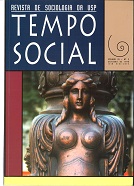Images of violence: speech practice
DOI:
https://doi.org/10.1590/ts.v10i2.86785Keywords:
Media, Violence, Police violence, Speech, ImaginaryAbstract
Due to the comprehension of media as an important “macrowitness” and its priviliged work inside the spreading chain of acts of violence, some topics are analysed, such as the relationship between the images and the speech in media, about violence in general and police violence in particular, and the way they provoke the articulation of the speech of people who belong to different social classes.Downloads
References
CARLSON, J.M. (1983) Crime show viewing by pre-adults: the impact on attitudes toward civil liberties.Communication Research, 10(4).
ERICSON, R. (1991) Mass media, crime, law and justice. An institutional approach. British Journal of Criminology, 31(3).
HANEY, C. & MANZOLATI, J. (1980) Television criminology: network illusions of criminal justice realities. In: ARONSON, E (ed.). Reading about the social animal. San Francisco, Freeman.
MELOSSI, D. (1992) El estado del control social. México, Siglo XXI.
RICHES, David. (1986) The phenomenon of violence. In: (org.). Anthropology of Violence. Oxford, Basil Blackwell.
SIGNORELLI, N. (1990) Television's mean and dangerous world. Cultivation Analysis. Londres, Newbury Park.
WOLF, Mauro. (1987) Teorias da comunicação. Lisboa, Editorial Presença.
ZILLMANN, D. & WAKSHLAG, J. (1985) Fearof victimization and the appeal of crime drama. In: ZILLMAN, D. & BRIANT, J (eds.). Selective exposure to communication. Hillsdale, J.J. Lawrence Erlbaum.
Downloads
Published
Issue
Section
License
Copyright (c) 1998 Tempo Social

This work is licensed under a Creative Commons Attribution-NonCommercial 4.0 International License.


